
Grammar worksheets and activities don’t have to be miserable and boring for students-or for you! Teaching grammar appears to be a something teachers either love or hate. There are a lot of polarizing opinions on how to teach grammar, punctuation, and parts of speech. Some say it should only be taught in the context of writing instruction, while others believe in a daily grammar block. The purpose of this post is not to debate an all or nothing approach. Instead, it will use the principle of grammar should not be an afterthought to instruction but an intentional part of our day.
Grammar Pacing Guide
Before sharing about teaching grammar, I’d like to share the pacing of my grammar units. The grammar pacing guide below is specific to third grade conventions and builds on second grade standards. My grammar worksheets and activities build upon this pacing guide.
The first unit focuses on nouns: identifying, singular and plural, common and proper, possessive, and abstract nouns. In the second unit the focus is on teaching verbs: identifying, linking verbs, helping verbs, verb tense, and subject-verb agreement. The third unit focuses on identifying and using adjectives and adverbs. The fourth unit includes everything else: complete sentences, compound and complex sentences, coordinating and subordinating conjunctions, and commas.
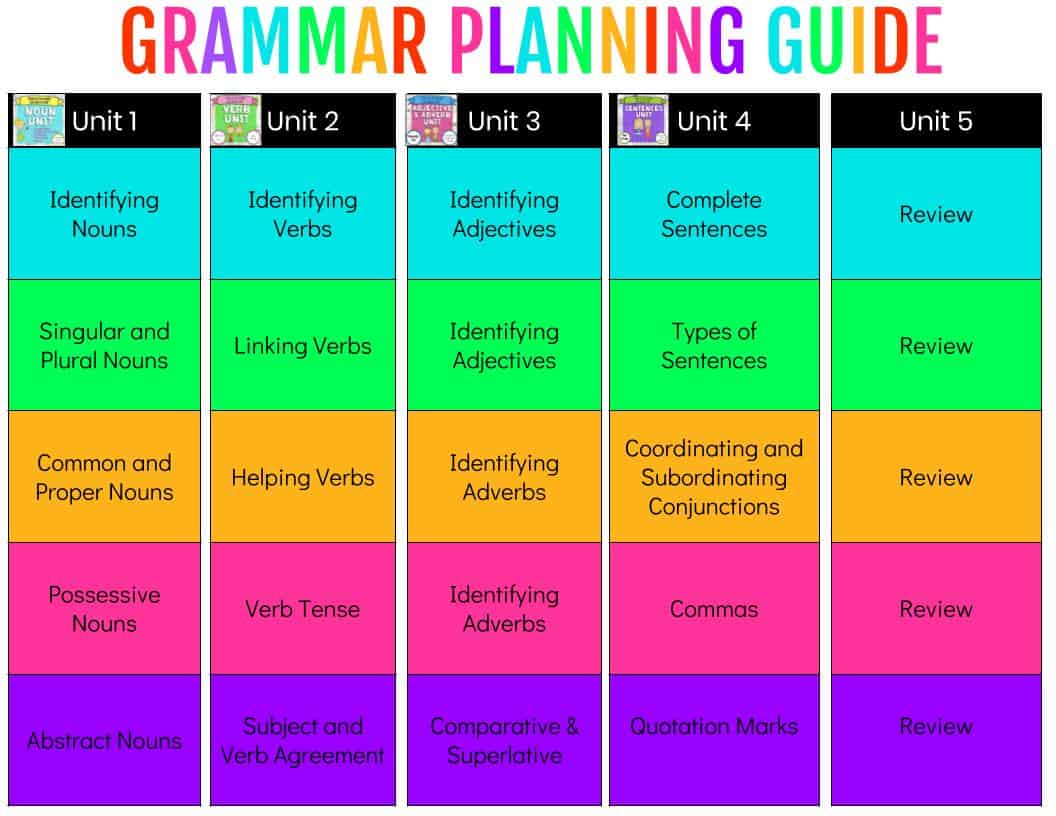
Incorporating Grammar With Writing
Grammar worksheets and activities alone are not enough for students to fully grasp parts of speech and conventions. I use about 10-15 minutes of my writing workshop block to teach grammar. That isn’t a lot of time for the massive amount of standards I need to teach, but I do squeeze in some review and practice. Most of my grammar instruction is centered around Jeff Anderson’s
Mechanically Inclined. It’s by far my favorite professional development for teaching grammar within the writing workshop framework.
Below are five of my favorite strategies to teach grammar to my upper elementary students. Of course, I don’t try to use each of these everyday. Instead a use a combination of the strategies below to ensure I teach all grammar standards in a timely manner that will allow my students to apply those skills to their writing.
Grammar Worksheets & Activities
It’s not always easy, but grammar worksheets and lessons doesn’t have to be mindless and boring. You can also introduce new concepts with engaging activities, rather than relying solely on grammar worksheets. These lessons may take a bit longer than a more basic grammar worksheet, but it allows students to gain a deeper understanding on the concepts. This understanding will save you time in the long run. For example, students may complete a plural noun sort, or they may design their own noun anchor chart by cutting out examples of nouns that represent a person, place, or thing.
I make sure the activities allow students to DO something, rather than be passive learners. I use the activities from my
noun,
verb,
adjective/adverb, and
sentence grammar units.
Grammar Worksheets
Over the years worksheets have gotten a bad rap. While I’m certainly not a drill and kill teacher, I do think a high quality worksheet can be useful for students. We have to pay attention to both the quantity and quality of anything we assign our students. I like to follow a learning activity with an application worksheet the following day. This gives students important extra practice with the skill they are learning. When selecting worksheets, look for ones that require more higher order thinking skills, rather than rote memorization. The worksheets I use are also from my grammar units, which saves me from having to continuously looking for complimentary lessons.
I do not assign a grade for these worksheets. Instead, I use them as a formative assessment to see which students may need additional small group instruction or practice.
Teaching Grammar With Games and Task Cards
You don’t have to limit yourself to grammar worksheets. What student doesn’t like games?! You can easily incorporate grammar games into your language arts centers or instruction. You can have students use task cards and games to practice the concepts they are currently studying or as a review. I was sure to include games and task cards in each of my grammar units.
You can read more about organizing task cards and games in
this blog post. I tried to include a lot of pictures and examples, because I know task card organization can be tricky.
Reviewing With Grammar Worksheets & Activities
Consistent review is essential for students to retain what they’ve learned and to be able to retrieve that information from their long term memories. I incorporate spiral review through my homework and morning work. While I don’t send home much homework, the homework I do send home is a spiral review. I don’t like to assign homework on something my students just learned in class, because many students will need reteaching. Instead, I use homework to have my students practice skills they have already learned.
This picture shows my Third Grade Spiral Language Review. This reviews the third grade Common Core Standards language skills through a spiral review worksheet. There is one worksheet for each week of the school year for a total of 36 worksheets.
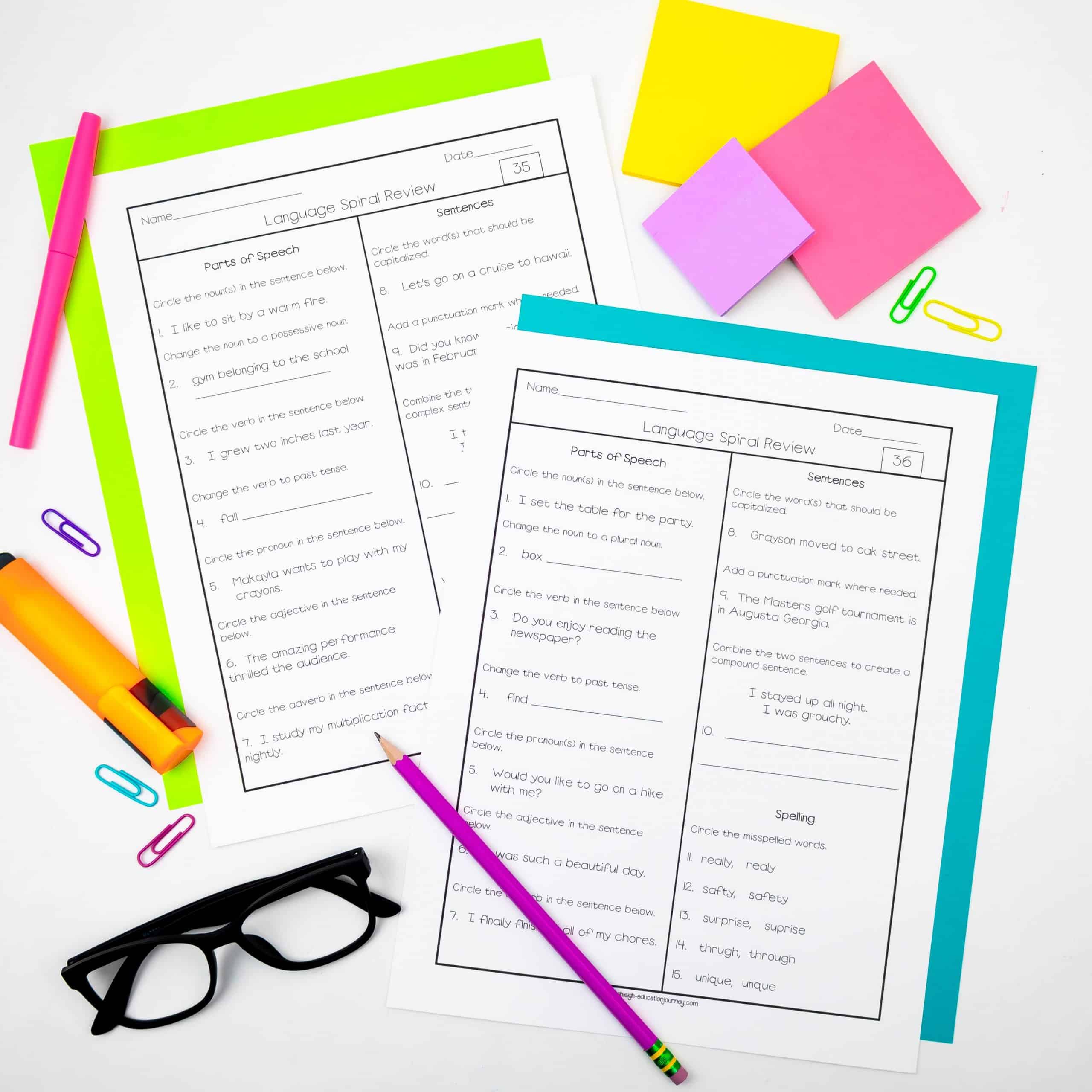
I also made a 4th grade version of the spiral language review. The skills reviewed include: Relative Pronouns, Relative Adverbs, Progressive Verbs, Modal Auxiliaries, Adjectives (ordering adjectives and identifying adjectives), Prepositional Phrases, Punctuation, Capitalization, Combining Sentences, Spelling, and Homophones.
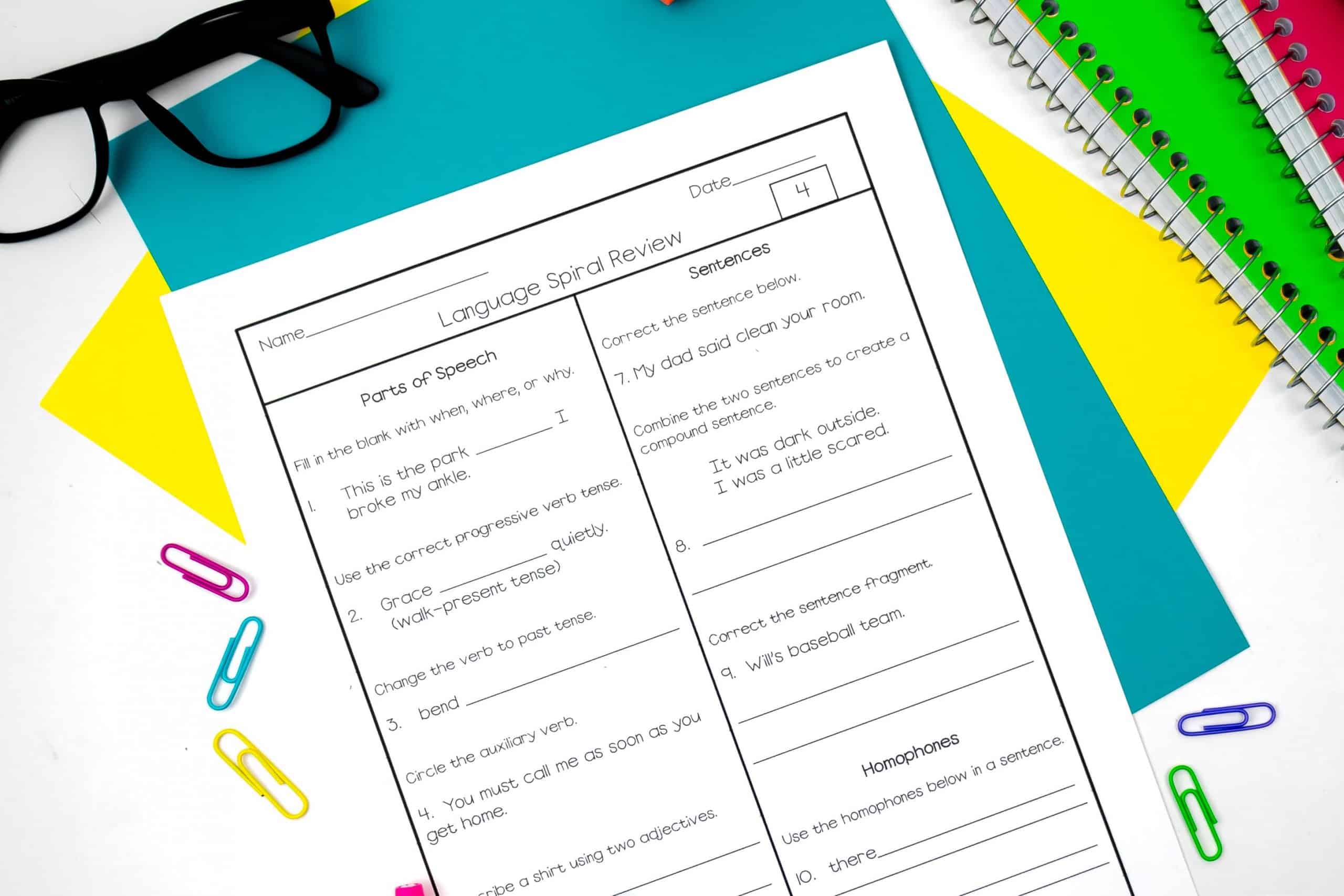
Morning work is another great way to incorporate spiral review. I have
Third Grade Language Arts Morning Work and
Fourth Grade Language Arts Morning Work, that is organized by the days of the week with different activities Monday through Friday. This is a great way to reinforce and review all of those tricky grammar and vocabulary skills. There are 36 weeks worth of questions, and each week is broken into sections to keep the review short and sweet. I go over this with my students every morning, and I have students correct their work with a pen.
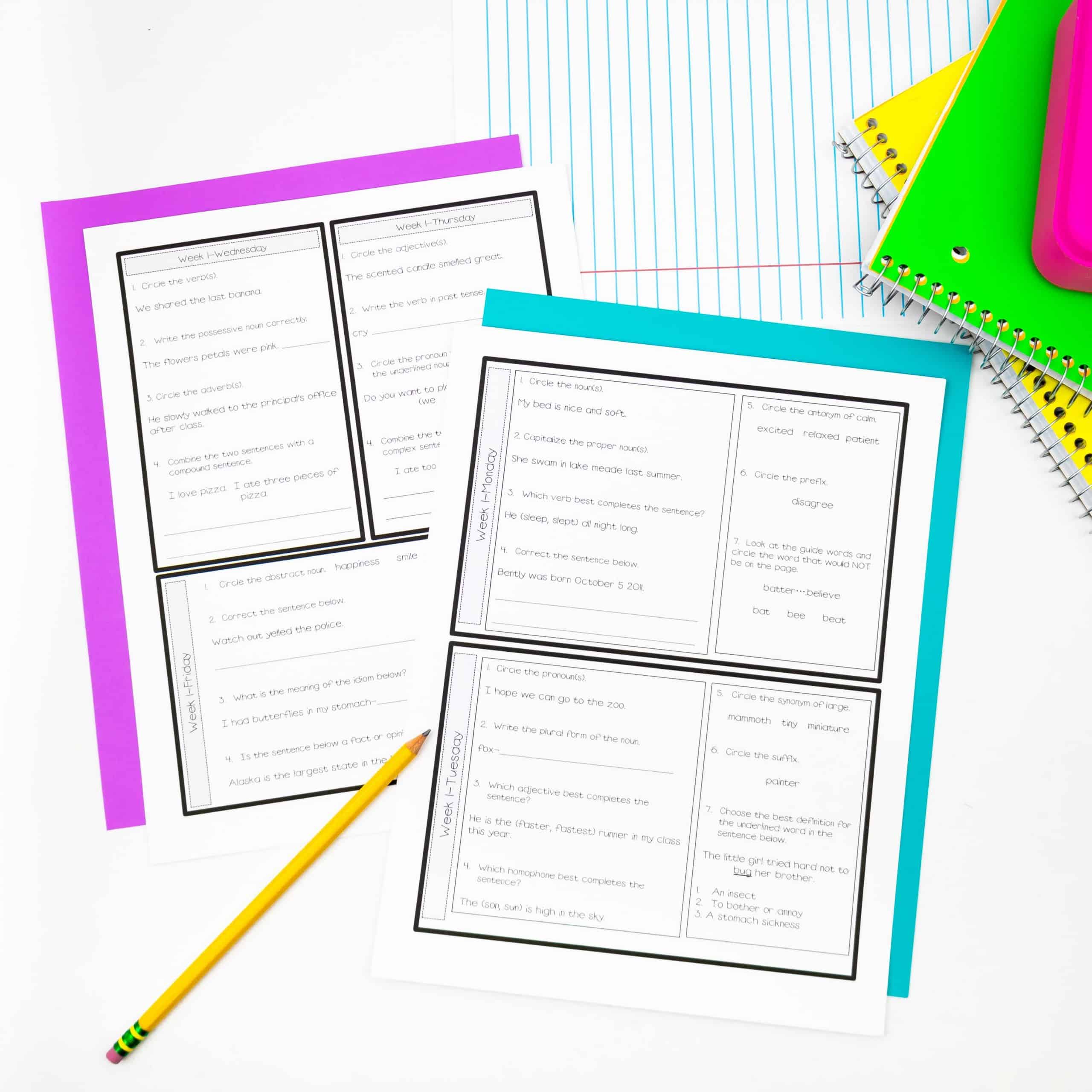

Some of the skills are tricky for students at the beginning of the year, so I often have students only complete part of the day’s problems until they are ready to complete all parts of the assignment. It usually only takes a week or two for students to be able to complete their morning work in a timely manner.
Teaching Grammar Through Mentor Sentences
I set aside a few minutes before and after our traditional writing workshop time to focus on these grammar skills. In addition to the activities, worksheets, and spiral review, I teach the grammar skills we are focusing on through mentor sentences. These are not “fix all” sentences with a variety of errors. Instead, each sentence will reflect the grammar concept of the week. I have students analyze these mentor sentences and discuss what is right or wrong with the sentences and why the sentences are correct.
It’s beneficial for students to learn from well written sentences, so they know what a good sentence looks like. To use mentor sentences for your grammar instruction, you should first find well-written sentences to model effective sentence structure and grammar. Present the mentor sentences and look for patterns within those sentences. Have students practice writing their own examples of the mentor sentence and highlight examples of the particular skill you are teaching in their own writing.
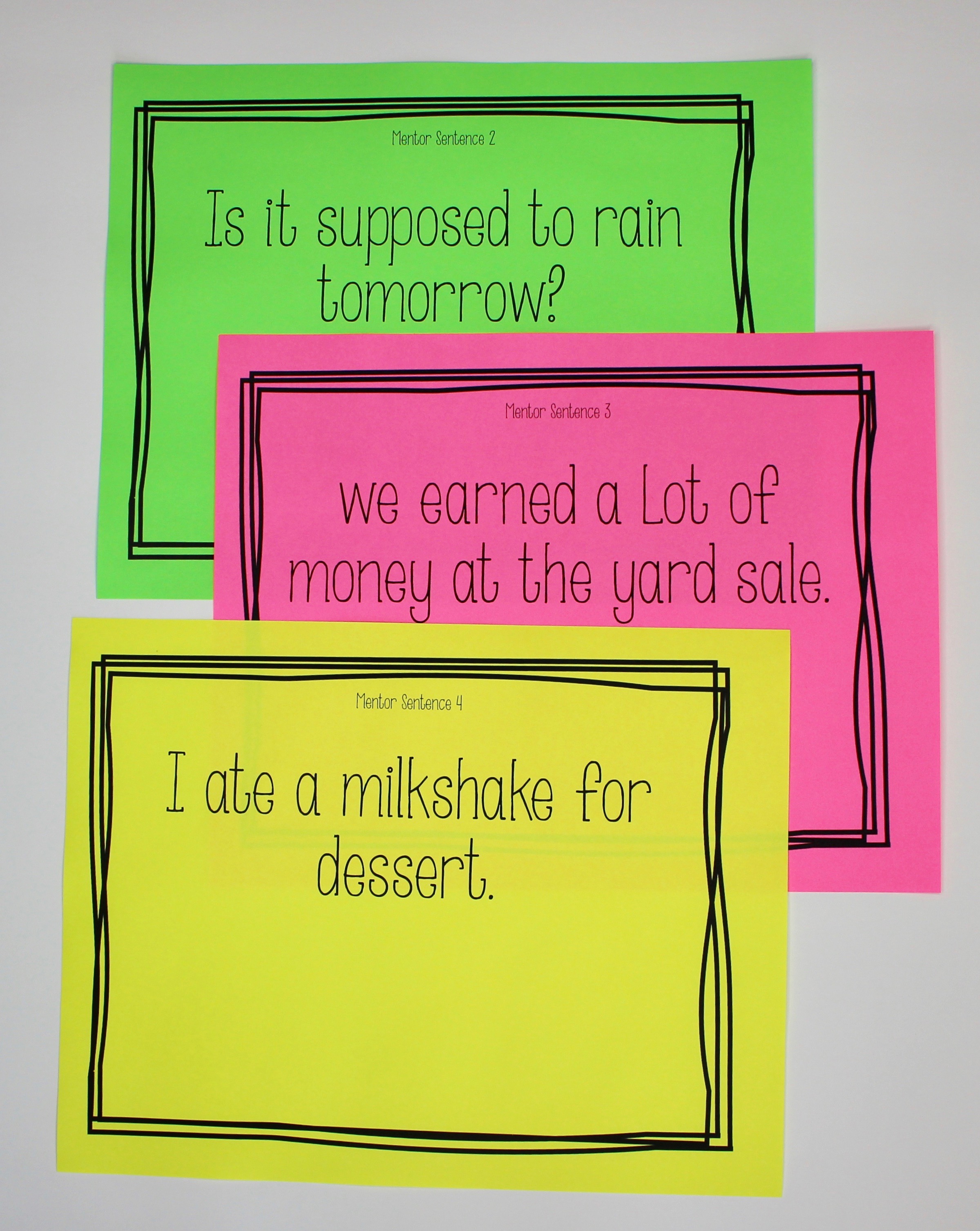
There are mentor sentence examples in my writing units. I wrote the sentences to go along with the mini lessons for the writing strategy taught for that day AND the grammar skill taught within that unit. You can learn more about my writing units
here.
After teaching a skill, I expect students to apply that skill in writing workshop. When conferencing with students for the application of that skill, try to primarily focus on what students have already learned. Otherwise, the conference turns into me telling students what to do, but the students have no idea why they are making the corrections.
Please let me know if you have any other questions or needs for grammar worksheets, lessons, and activities!
Related Posts


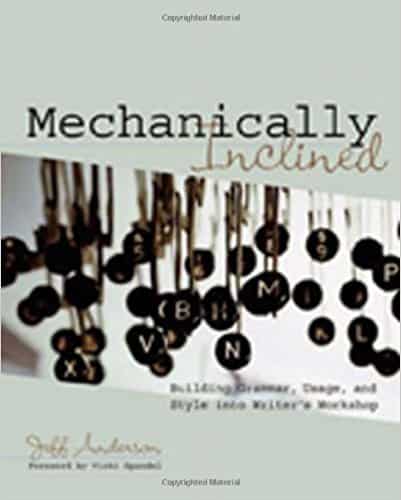
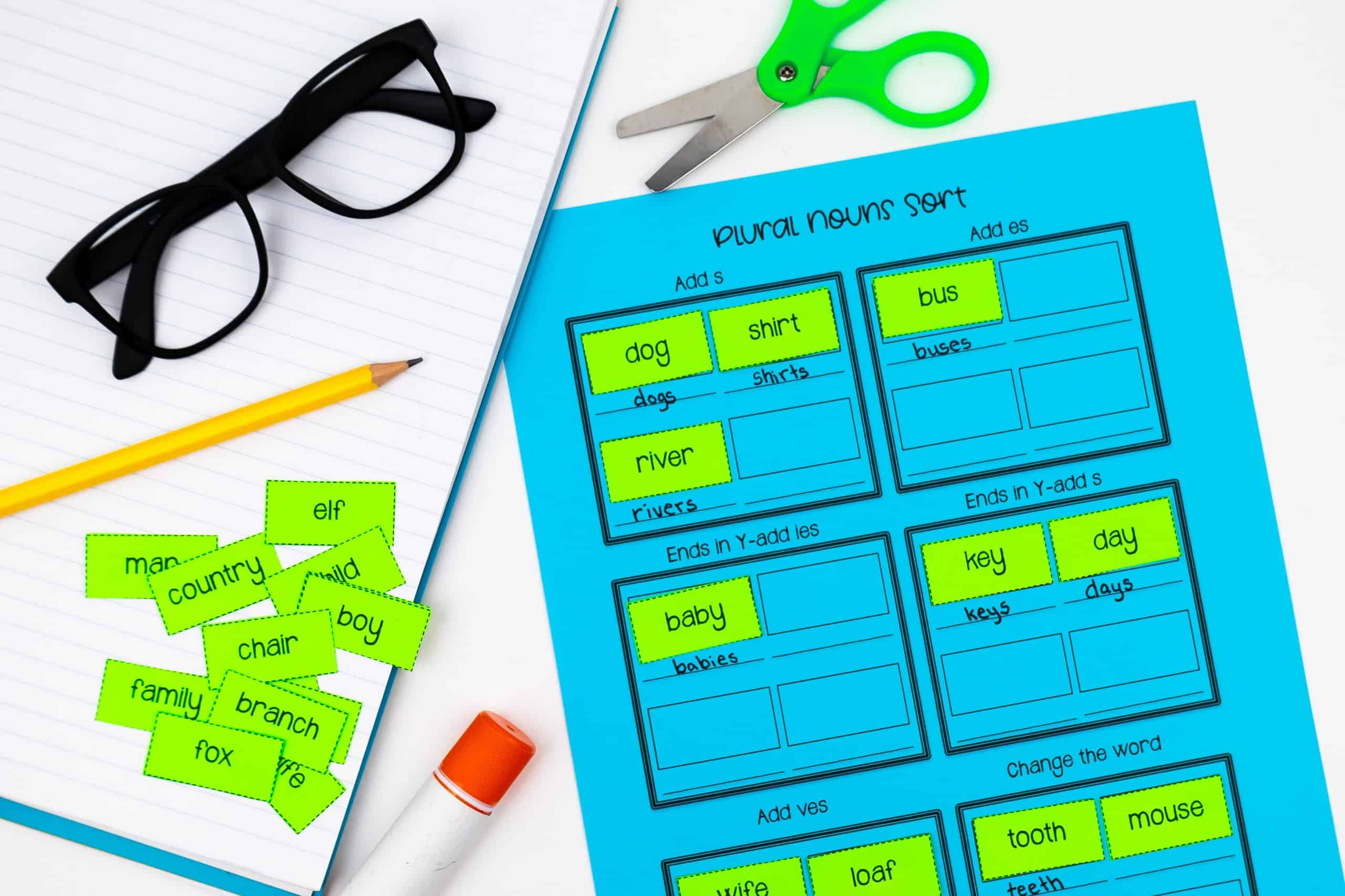
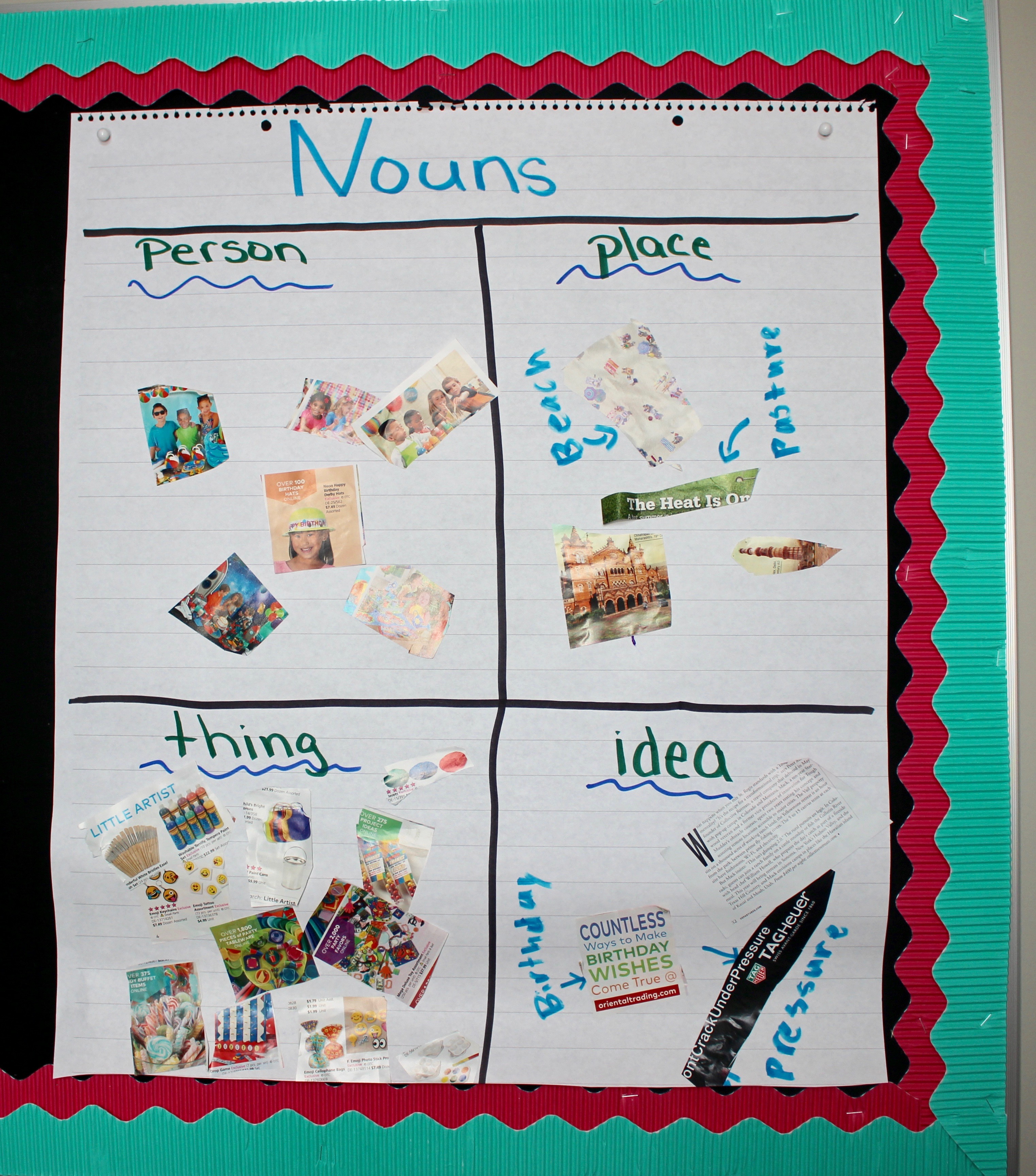

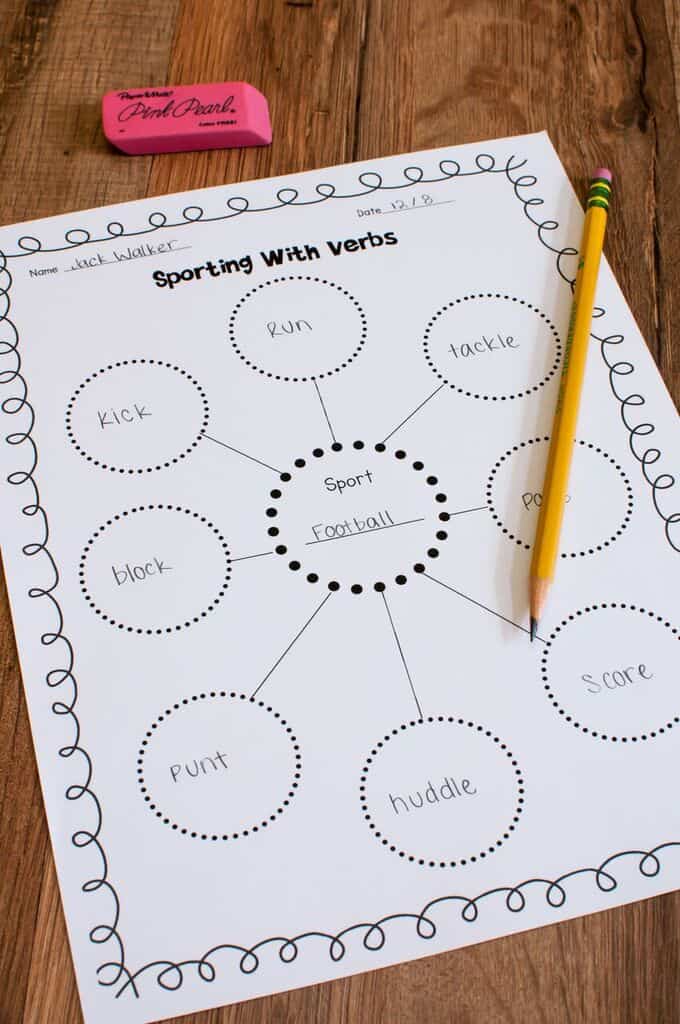
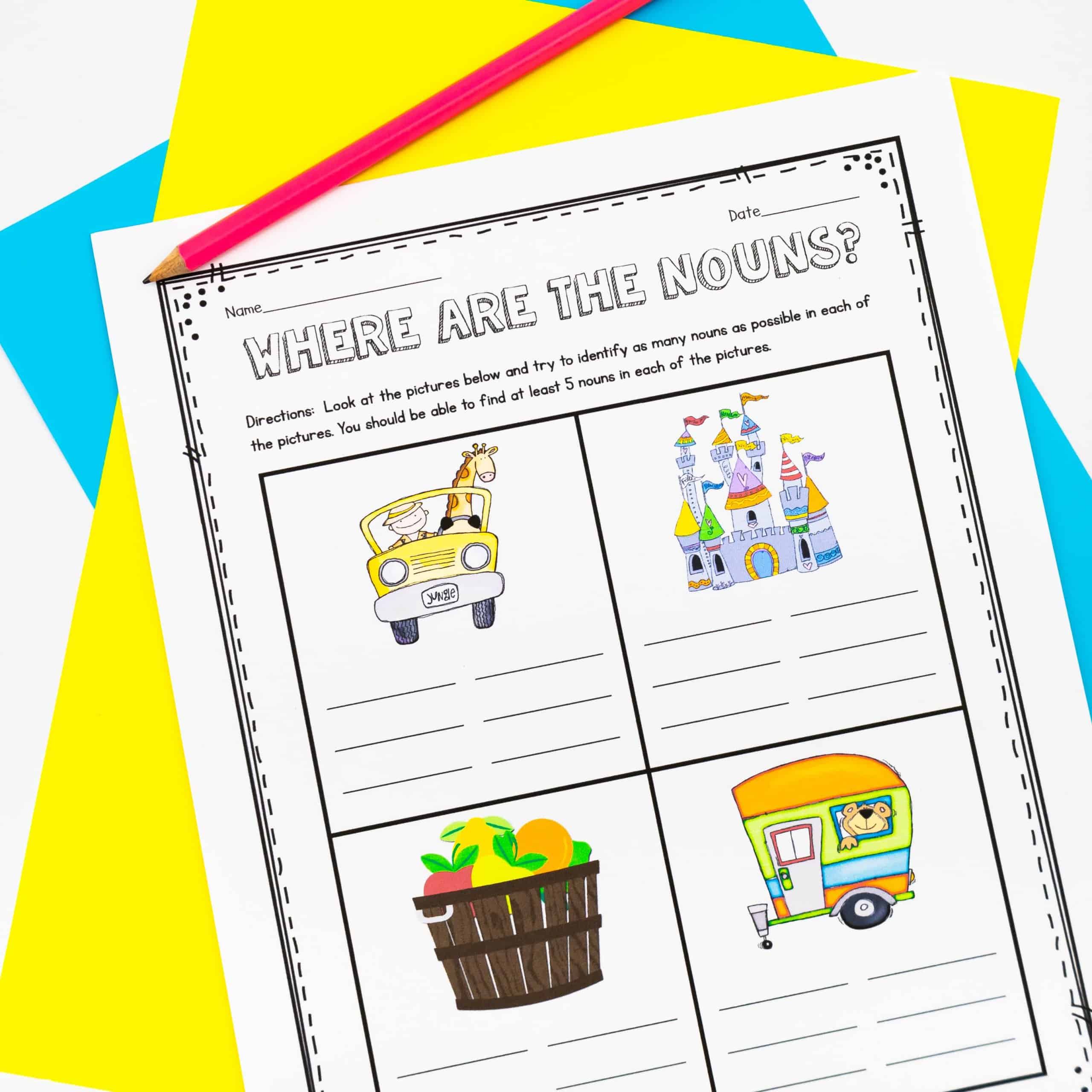
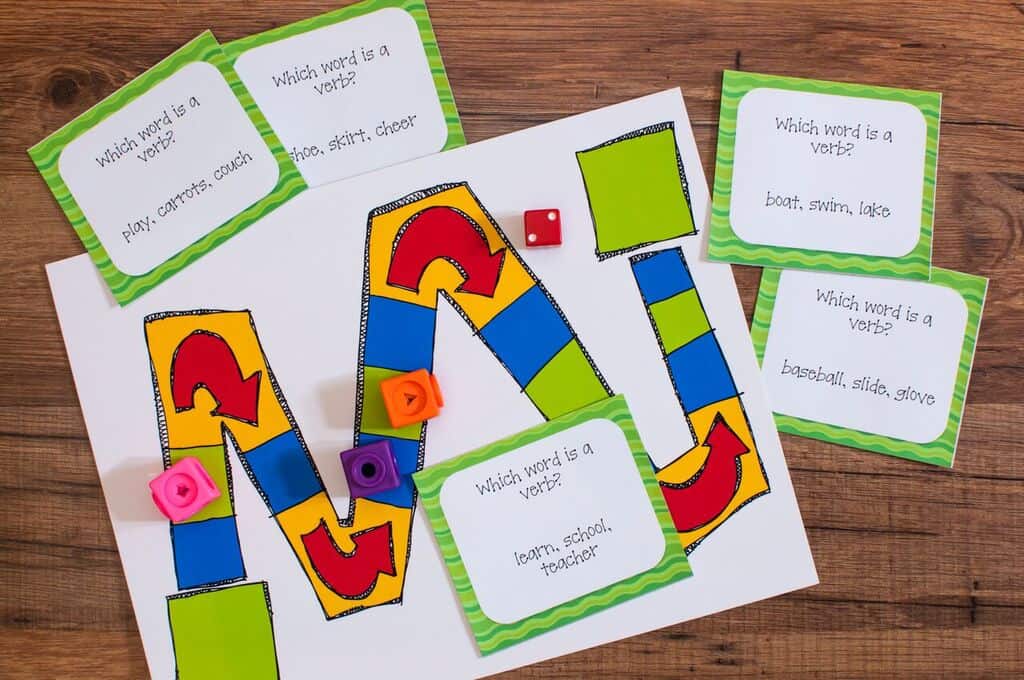
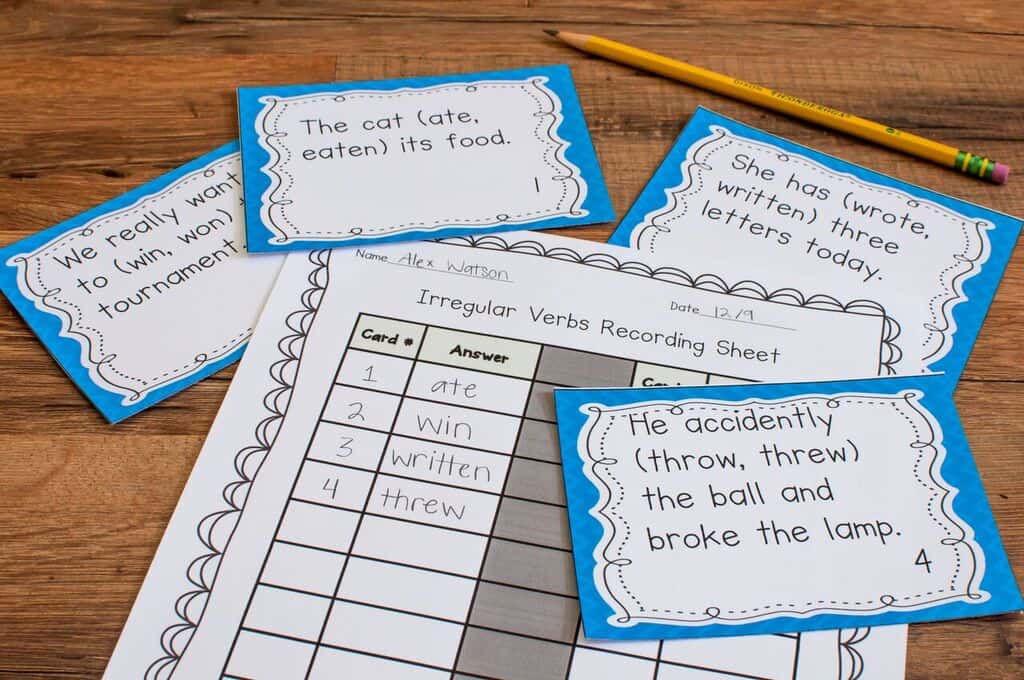




 There are mentor sentence examples in my writing units. I wrote the sentences to go along with the mini lessons for the writing strategy taught for that day AND the grammar skill taught within that unit. You can learn more about my writing units here.
There are mentor sentence examples in my writing units. I wrote the sentences to go along with the mini lessons for the writing strategy taught for that day AND the grammar skill taught within that unit. You can learn more about my writing units here.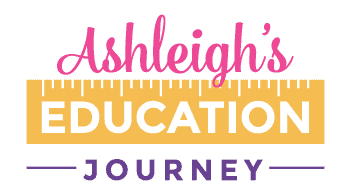

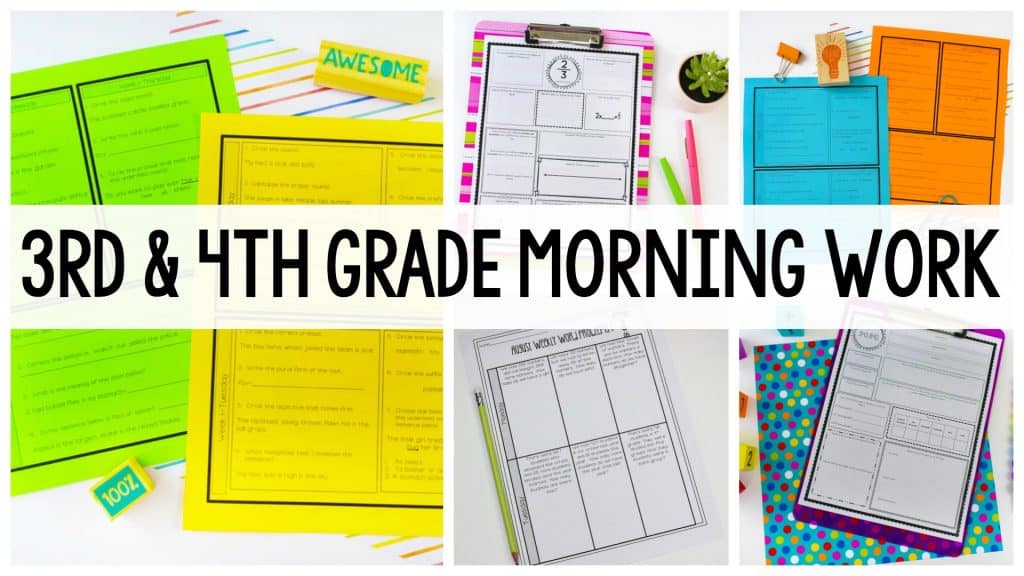
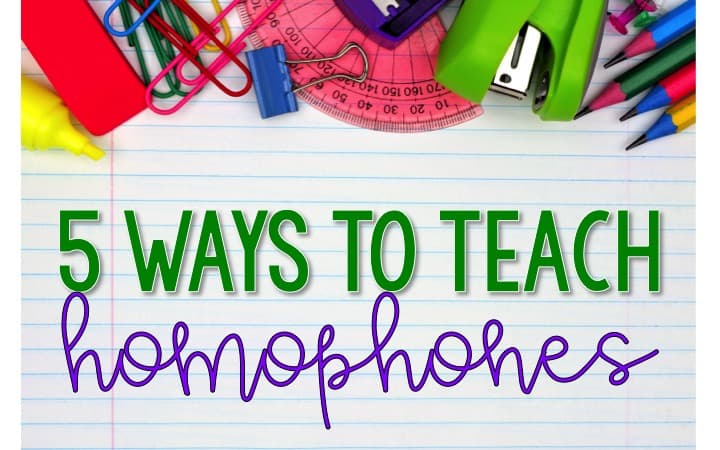
Ashleigh, is this the Parts of Speech bundle in your TPT store? I truly enjoyed all of the lessons you include. I will be teaching third grade next year and your work looks very hlepful to me! Thank you.
Yes! You can find it here.
Ashleigh I love your materials and appreciate the effort you put into all that you create. Would you PLEASE consider creating your grammar materials for fifth grade? Many of your products that I’ve purchased are based on third/fourth grade. I have adapted many of them for fifth, but I am hoping that you will consider creating them for fifth
Fifth grade grammar Pretty please